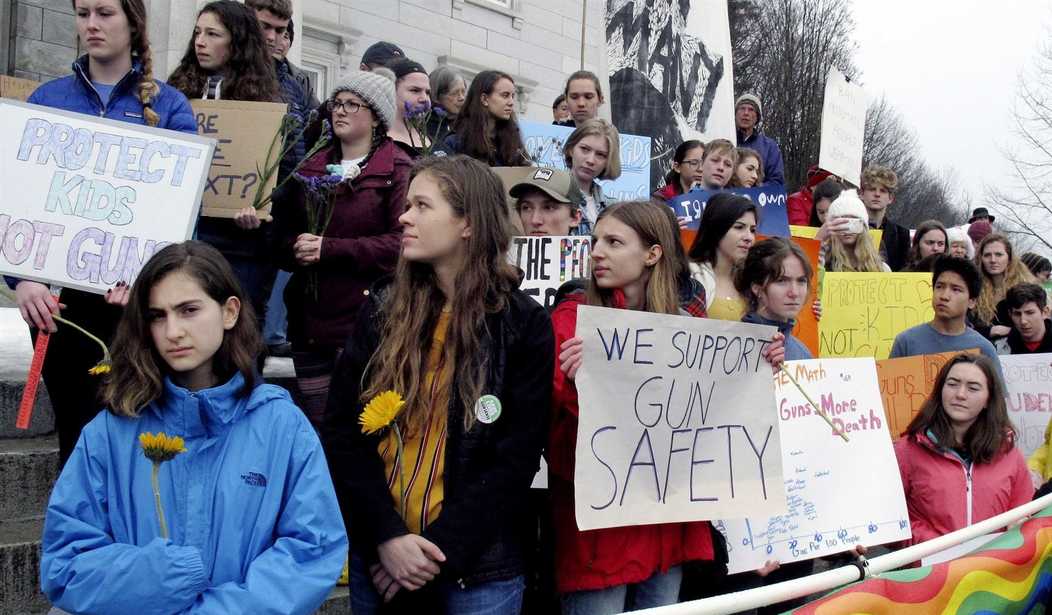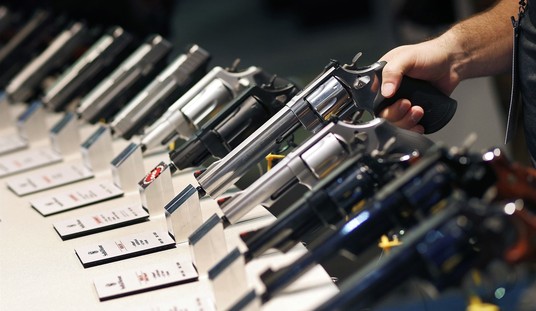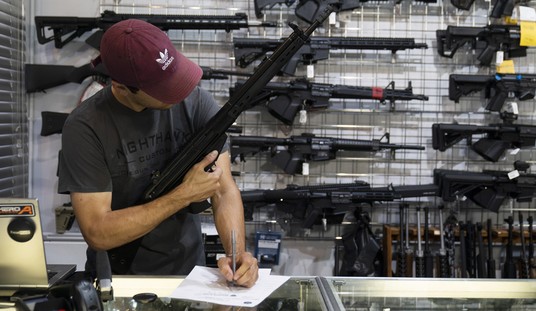When it comes to gun control, not all supporters are the same. Based on my experience in covering the gun debate over the past two decades, there’s actually a fairly small group of hardcore anti-gun activists who are committed and devoted to their cause, but most folks who say they’re in favor of more restrictions on guns don’t pay too much attention to the details of any specific legislation.
These “soft” supporters of gun control tend to just blindly accept the claims of the anti-gun zealots that each new “common sense gun safety regulation” will make us all safer, but a horrific shooting in Sacramento in which a father murdered his own children and a custodial guardian before killing himself should lead those supporters to question how effective even the harshest gun control laws are at preventing shocking and heartbreaking crimes like this.
The father who fatally shot his three daughters and a man at a California church this week repeatedly threatened to kill his estranged girlfriend and scared their girls so much they cried and one bit off her fingernails, according to a restraining order that was supposed to keep him away from guns and bullets.
But 39-year-old David Mora had both when he showed up Monday for a supervised visit with his daughters, ages 13, 10 and 9. He shot them, the chaperone he and his ex-girlfriend had agreed could oversee the weekly visits, and then himself.
The violence at The Church in Sacramento, a nondenominational Christian place of worship, raised troubling questions: How did Mora get a gun? Should his arrest a week earlier on felony charges have prompted postponement of his visitation? And what pushed him over the edge to commit such a heinous act two days before his middle daughter turned 11?
The Sacramento County Sheriff’s Office has said little publicly about what investigators have learned. “We are not disclosing the type of weapon at this time. How he came to possess a firearm will be part of the investigation,” Sgt. Rodney Grassmann said in a text message Wednesday.
Mora’s five-year restraining order barred him from possessing firearms, and on a court document he submitted he denied having any. Moreover, his ex-girlfriend, who had lived with him and their daughters, didn’t believe he had any firearms and so didn’t seek what’s known as a “red flag” restraining order.
If he didn’t have a gun beforehand and acquired one after that restraining order was issued, then California’s laws requiring universal background checks and a ten-day waiting period clearly failed to prevent him from illegally getting ahold of a firearm. Additionally, California law now requires background checks on all ammunition purchases as well, but that was also apparently no impediment to the killer.
The shooting prompted promises from California state lawmakers to look for gaps in what advocates say are already the nation’s strictest gun regulations.
“How did this happen? Is there a loophole in law that we need to correct?” Democratic Assemblyman Mike Gipson asked.
“The legal system failed. We need to do better,” Democratic state Sen. Susan Rubio said.
Rubio noted that lawmakers tightened visitation requirements and the state’s domestic violence law last year. But she said the slayings show “we have more work to do. Law enforcement, judges, advocates and legislators need to work together to close the gaps in the legal system.”
How about recognizing that gun control laws, no matter how draconian they might be, don’t actually prevent violent crimes if someone is intent on carrying out their murderous plans?
I have no idea what the investigation will uncover in terms of how Mora was able to get his hands on a gun and ammunition despite a restraining order barring him from possessing either, but there are a number of possibilities. Mora could have simply lied to the court about not having a gun, but he could also have obtained one on the black market, by theft, or even crafting one himself.
What’s the “loophole” that needs to be corrected here? Should every subject of a restraining order have their homes and vehicles searched for firearms, even if there’s no evidence that they’re illegally possessing a gun? That’s a Fourth Amendment lawsuit waiting to happen.
There is no gun control law that would have prevented this horrific crime from taking place. The best opportunity to have done that came when Mora was arrested on felony charges of assaulting a law enforcement officer a week before the killing. Given those charges, as well as the restraining order and threats of violence against his ex, I’d argue that there was a good case to be made that Mora was a danger to the community.
A Sacramento resident, Mora was driving southbound on Ward Road, south of Cotton Road, in a 2013 Kia Rio when his car left the roadway and entered a field of dirt and mud, where it became stuck, the CHP said. A CHP officer arrived and met Mora outside the Kia. The CHP said Mora displayed signs and symptoms of being under the influence of alcohol or drugs. According to the CHP, an altercation between Mora and the officer ensued.
Mora allegedly struck and tried to gain control over the officer during the altercation. Additional CHP officers and Merced County Sheriff’s deputies responded to the scene, and Mora was arrested on suspicion of driving under the influence and assaulting a peace officer. After Mora was taken to Memorial Hospital in Los Banos for evaluation, he allegedly assaulted an emergency worker. Mora was later booked into Merced County Jail on suspicion of driving under the influence, battery against a peace officer and resisting, according to authorities.
Mora was arrested on February 22nd but bailed out of jail just two days later. On the evening of February 28th, Mora brutally murdered his own children and the guardian that was supposed to monitor his visit with his three daughters before taking his own life.
There’s not a gun control law out there that could have stopped Mora from illegally obtaining a gun and ammo on the black market if he wanted them. There’s no law that would have guaranteed Mora was telling the truth when he declared to the court that he didn’t own a gun. What could have and would have made a difference, however, is a criminal justice system that recognized the danger Mora posed; not just to himself, police, and emergency responders, but to his own flesh-and-blood as well.









Join the conversation as a VIP Member